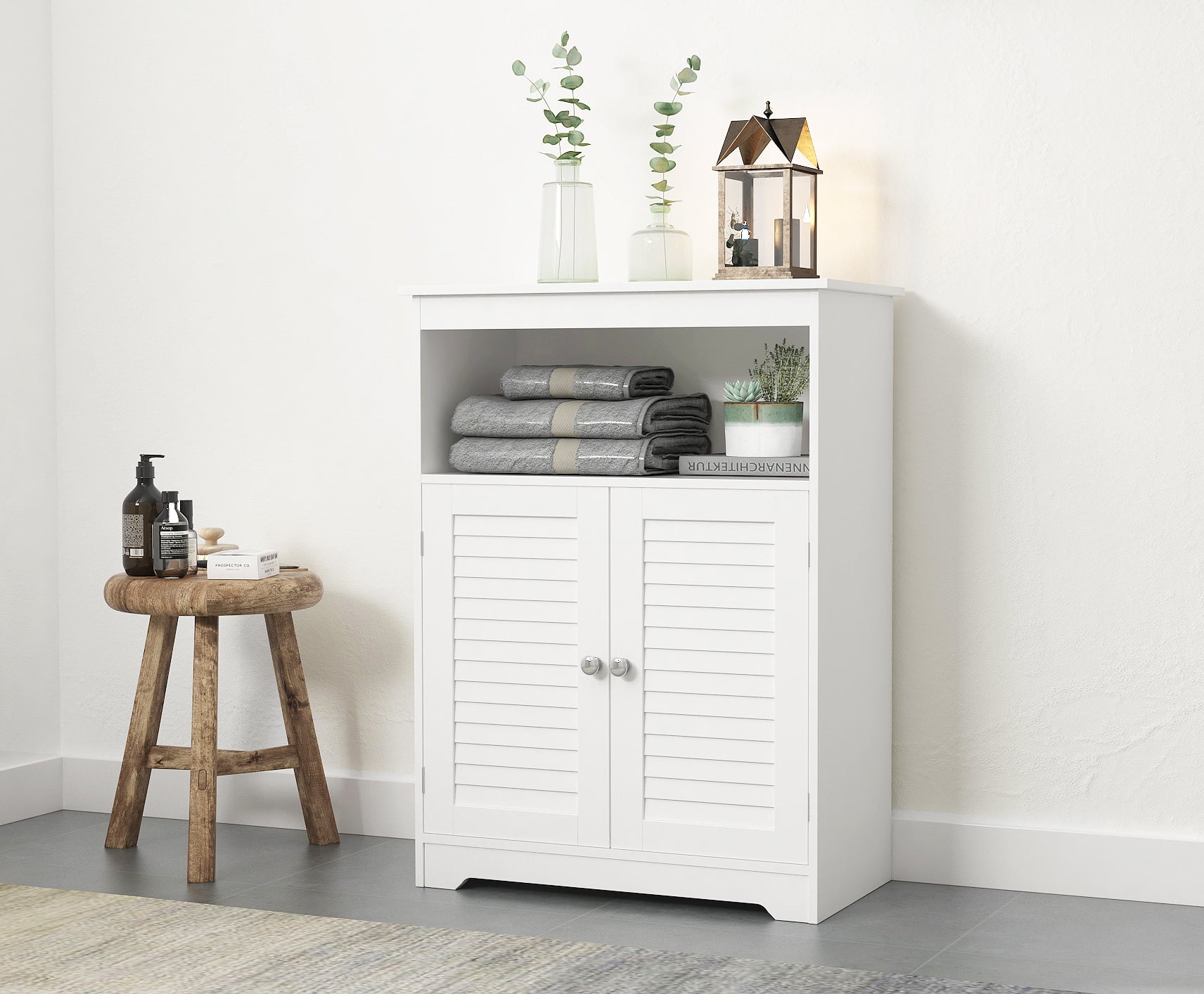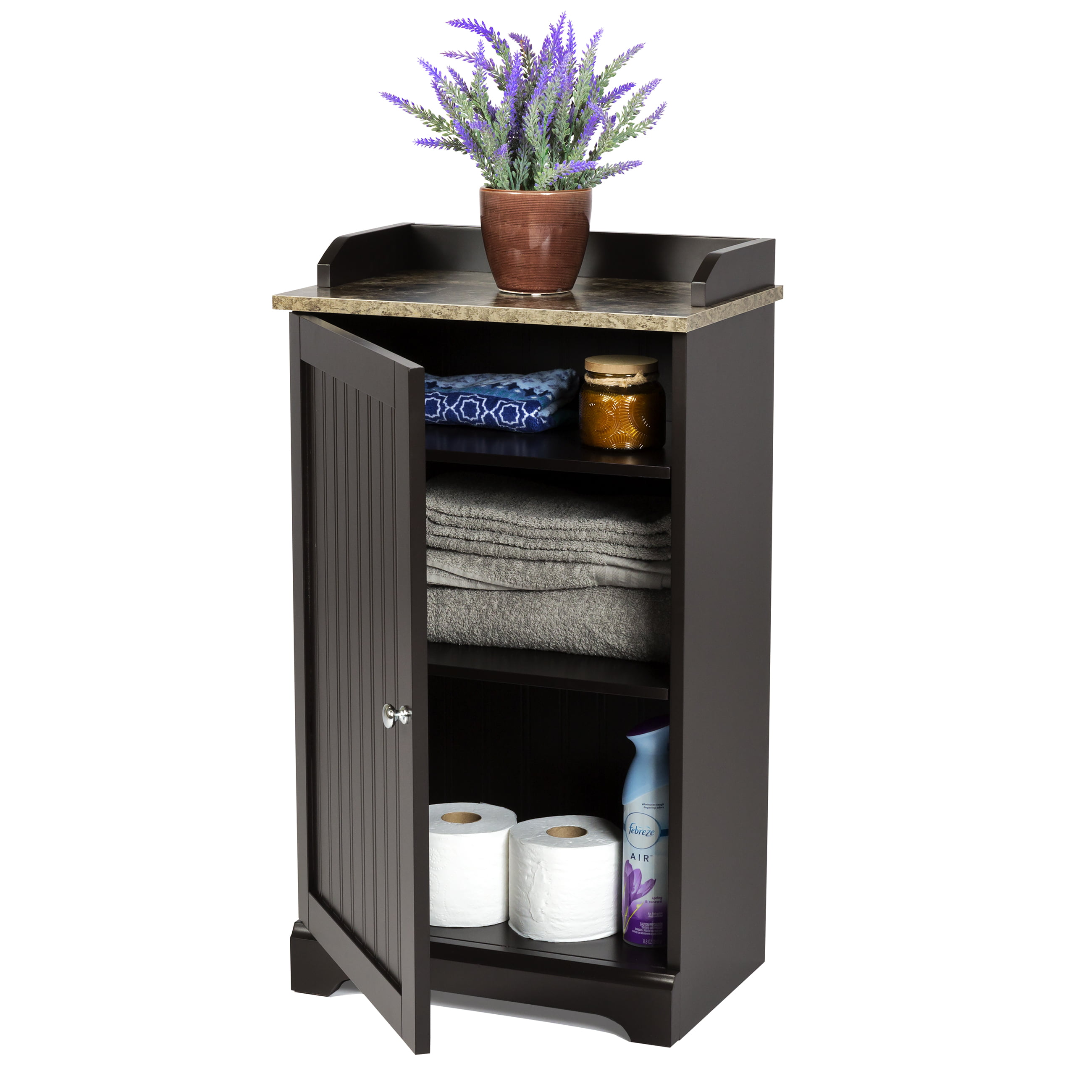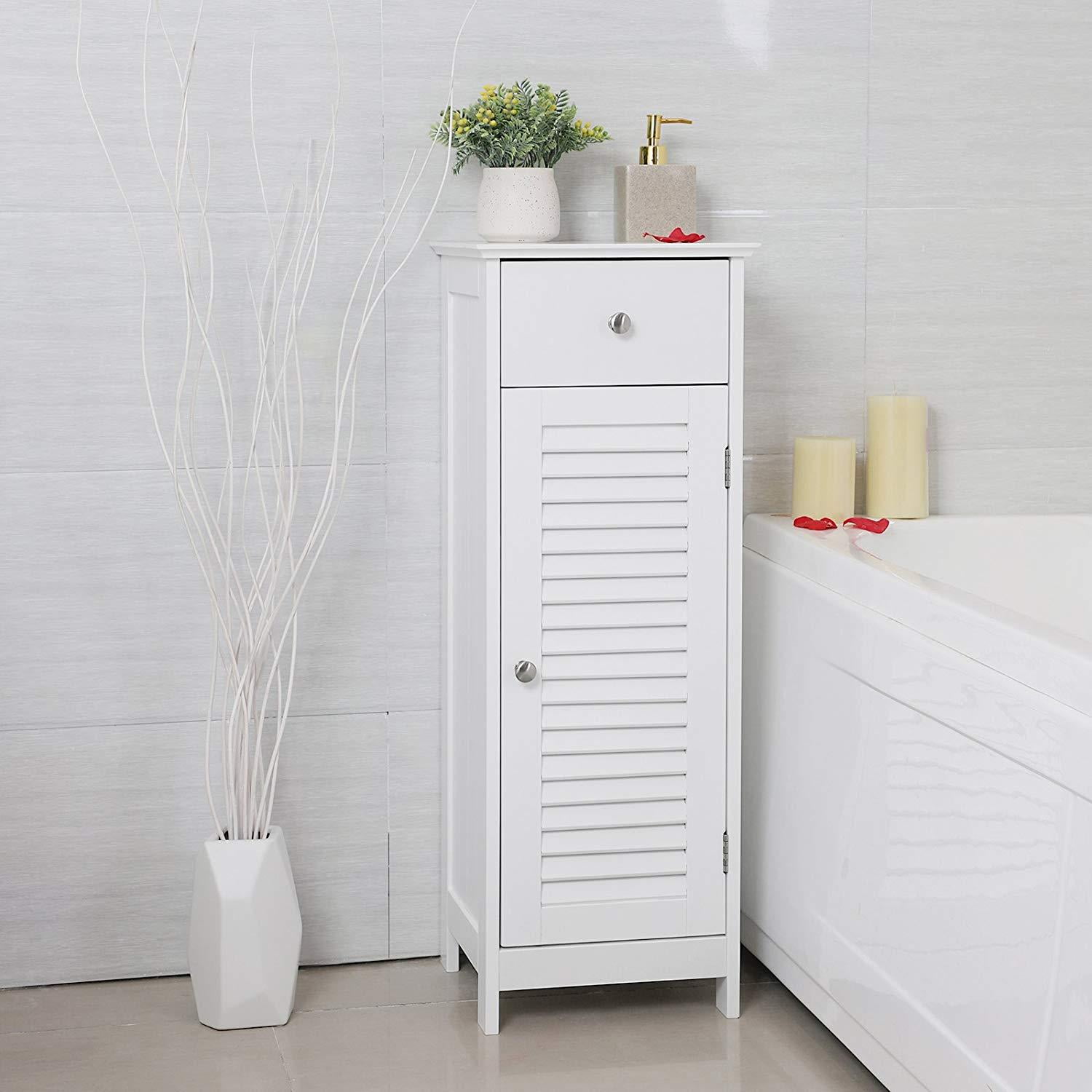Understanding Assembled Bathroom Floor Cabinets

Assembled bathroom floor cabinets are essential fixtures in modern bathrooms, offering storage solutions and enhancing the overall aesthetic appeal. These pre-built cabinets are designed for easy installation and come in various styles, sizes, and materials to suit different bathroom designs and needs.
Advantages and Disadvantages of Pre-Assembled Cabinets
Pre-assembled bathroom floor cabinets offer several advantages over DIY options, including convenience, time-saving, and professional finish. However, they also come with some drawbacks, such as limited customization and potentially higher cost.
- Advantages:
- Convenience: Pre-assembled cabinets eliminate the need for complex construction and assembly, making installation quick and straightforward. This is particularly beneficial for individuals with limited DIY skills or time constraints.
- Time-Saving: With pre-assembled cabinets, you can skip the time-consuming process of cutting, assembling, and finishing, allowing for a faster bathroom renovation.
- Professional Finish: Pre-assembled cabinets often come with a professional finish, ensuring a consistent and polished look that complements the overall bathroom design.
- Disadvantages:
- Limited Customization: Pre-assembled cabinets offer limited customization options compared to DIY cabinets, as you are restricted to the available designs and sizes.
- Potentially Higher Cost: Pre-assembled cabinets can be more expensive than DIY options, as they include the cost of materials, assembly, and often, a premium for convenience.
Common Materials Used in Construction
Bathroom floor cabinets are typically constructed from various materials, each with its own advantages and disadvantages.
- Wood: Wood is a popular material for bathroom floor cabinets due to its durability, natural beauty, and ability to be stained or painted to match any bathroom décor. However, wood requires proper maintenance to prevent moisture damage and can be susceptible to warping or cracking.
- Medium-Density Fiberboard (MDF): MDF is a cost-effective alternative to wood, offering good stability and moisture resistance. However, MDF is not as durable as wood and can be prone to scratches or dents.
- Laminate: Laminate is a durable and water-resistant material often used for cabinet doors and fronts. It comes in a wide range of colors and patterns, making it a versatile option for various bathroom styles. However, laminate can be prone to chipping or peeling over time.
- Metal: Metal cabinets are highly durable and water-resistant, making them suitable for bathrooms with high humidity levels. They often come in sleek and modern designs but can be more expensive than other materials.
Key Features and Functionalities
Assembled bathroom floor cabinets often come with various features and functionalities to enhance storage and organization.
- Adjustable Shelves: Adjustable shelves allow you to customize the interior space to accommodate different items and optimize storage efficiency.
- Soft-Close Hinges: Soft-close hinges ensure smooth and quiet door closure, preventing slamming and extending the life of the cabinet.
- Pull-Out Drawers: Pull-out drawers provide easy access to items stored in the lower part of the cabinet, eliminating the need to bend or reach.
- Integrated Lighting: Some cabinets come with integrated lighting, illuminating the interior and making it easier to find items.
- Vanity Tops: Cabinets with integrated vanity tops provide a convenient and stylish solution for bathroom sinks, offering a seamless and integrated look.
Types and Styles of Assembled Bathroom Floor Cabinets

Assembled bathroom floor cabinets come in a wide array of styles, sizes, and materials to suit various bathroom designs and storage needs. Understanding the different types and styles available can help you choose the perfect cabinet for your space.
Styles of Assembled Bathroom Floor Cabinets
The style of your bathroom floor cabinet can significantly impact the overall aesthetic of your bathroom. Here are some popular styles:
| Style | Defining Characteristics |
|---|---|
| Modern | Clean lines, minimalist design, often featuring sleek metal accents and geometric shapes. |
| Traditional | Classic and elegant, with ornate details, intricate carvings, and a timeless appeal. |
| Farmhouse | Rustic and charming, often featuring distressed wood finishes, simple designs, and open shelving. |
| Contemporary | Modern with a focus on functionality and clean lines. May incorporate bold colors and unique materials. |
| Transitional | A blend of modern and traditional styles, creating a balanced and sophisticated look. |
Sizes and Configurations of Assembled Bathroom Floor Cabinets
Assembled bathroom floor cabinets come in various sizes and configurations to accommodate different bathroom layouts and storage needs.
- Single-door cabinets: These compact cabinets offer basic storage solutions and are ideal for smaller bathrooms or under-sink spaces.
- Double-door cabinets: Providing more storage space, double-door cabinets are perfect for larger bathrooms or when ample storage is required.
- Vanity units: Vanity units combine a countertop with a cabinet base, offering a complete and integrated solution for bathroom storage and sink placement.
- Corner cabinets: These cabinets are designed to fit into corner spaces, maximizing storage in tight areas.
- Tall cabinets: Ideal for maximizing vertical space, tall cabinets offer ample storage for towels, linens, and other bathroom essentials.
Materials Used in Assembled Bathroom Floor Cabinets
The material used in the construction of your bathroom floor cabinet influences its durability, aesthetics, and price.
- Wood: A classic choice, wood offers natural beauty, durability, and a warm feel. It is available in various finishes and styles, including oak, maple, and cherry.
- Laminate: A cost-effective and durable option, laminate is resistant to moisture, scratches, and stains. It comes in a wide range of colors and patterns, mimicking the look of natural wood.
- Metal: Often used for accents or frames, metal adds a modern and sleek touch. Stainless steel and aluminum are popular choices due to their durability and resistance to rust.
Finishes for Assembled Bathroom Floor Cabinets
The finish of your bathroom floor cabinet plays a significant role in its overall appearance and style.
- Paint: Offers a wide range of colors and finishes, allowing you to customize your cabinet to match your bathroom decor.
- Stain: Enhances the natural beauty of wood, providing a rich and warm finish. It comes in various shades and tones to suit different preferences.
- Veneer: Thin layers of wood applied to a base material, providing the look and feel of real wood at a lower cost.
Choosing and Installing Assembled Bathroom Floor Cabinets

Once you’ve determined the type of bathroom floor cabinet that best suits your needs, the next step is choosing the right one and installing it. This involves careful consideration of several factors and a straightforward installation process.
Factors to Consider When Choosing an Assembled Bathroom Floor Cabinet
The right bathroom floor cabinet is essential for functionality and aesthetics. Here’s a checklist of factors to consider when making your selection:
- Size: Measure the available space in your bathroom carefully. Consider the cabinet’s width, depth, and height to ensure it fits comfortably and doesn’t obstruct movement or access to other fixtures.
- Style: Choose a style that complements your bathroom’s decor. Consider the cabinet’s material, finish, and design elements, such as door handles and hardware.
- Storage Needs: Assess your storage requirements. Consider the number of drawers, shelves, and compartments needed to accommodate your toiletries, towels, and other bathroom essentials.
- Budget: Set a realistic budget and explore options within your price range. Assembled bathroom floor cabinets come in various price points, depending on materials, features, and brand.
Installing an Assembled Bathroom Floor Cabinet
Installing an assembled bathroom floor cabinet is a relatively simple process that can be completed with basic tools and a little patience.
- Tools and Materials: You will need a level, tape measure, pencil, drill, screwdriver, and appropriate screws for attaching the cabinet to the wall.
- Preparing the Installation Area: Clear the area where the cabinet will be installed and ensure the floor is level. If necessary, use shims to adjust the cabinet’s position for stability.
- Attaching the Cabinet to the Wall: Locate the studs in the wall using a stud finder. Mark the locations for the screws and drill pilot holes. Secure the cabinet to the wall using the provided screws or appropriate screws for your wall material.
- Connecting Plumbing Fixtures: If your cabinet includes a sink or other plumbing fixtures, connect the water supply lines and drain pipes according to manufacturer instructions. Ensure all connections are tight and leak-free.
- Integrating with Existing Fixtures: Consider the placement of the cabinet in relation to other bathroom fixtures, such as the toilet, shower, and bathtub. Ensure adequate clearance for easy movement and access.
Tips and Tricks for Proper Installation
- Use a Level: Ensure the cabinet is level before securing it to the wall. This will prevent the cabinet from tilting or becoming unstable over time.
- Check for Stability: Once the cabinet is installed, gently test its stability by pushing or pulling on it. If it feels wobbly, tighten the screws or adjust the shims as needed.
- Consider Weight Distribution: Avoid overloading the cabinet with heavy items. Distribute the weight evenly to prevent the cabinet from becoming unbalanced.
- Protect the Finish: Use protective pads or felt strips under the cabinet’s legs to prevent scratches on the floor.
